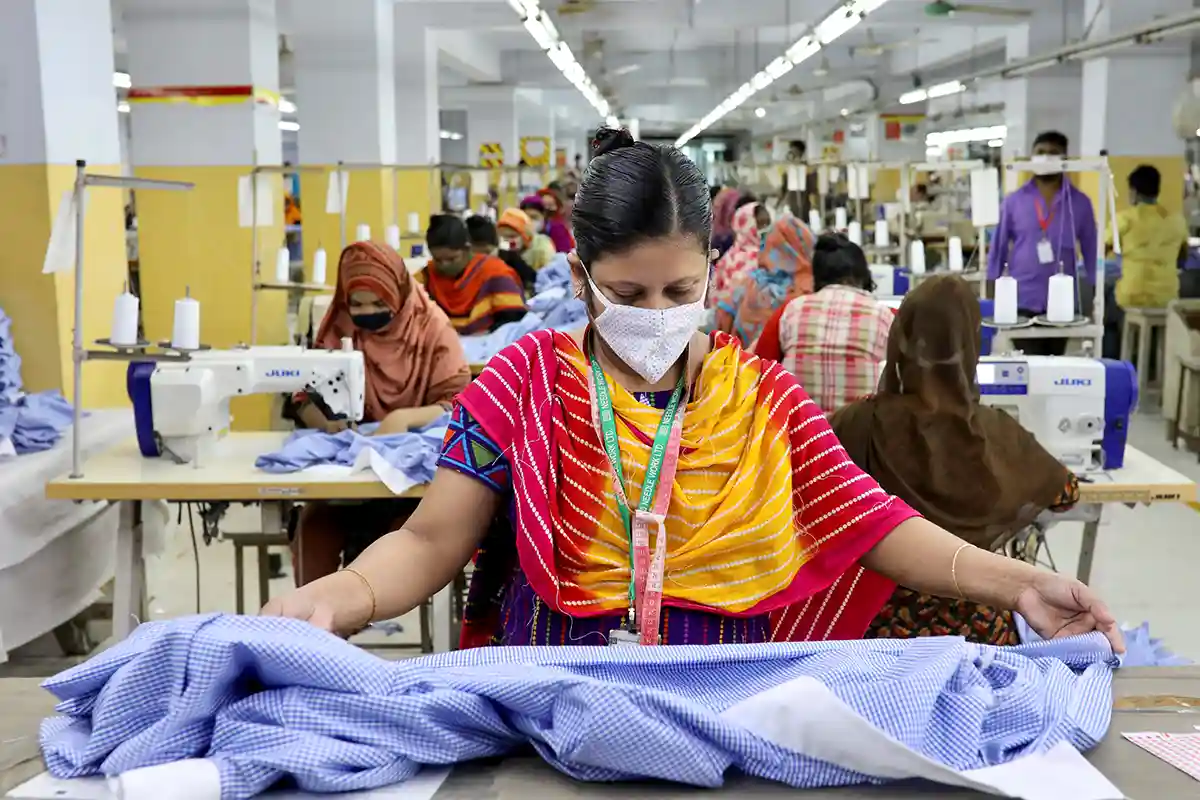In the highly competitive apparel industry, leading brands must constantly innovate and optimize their sourcing strategies to maintain a competitive edge. This case study explores the successful apparel sourcing strategies adopted by top brands, focusing on key success factors, best practices, and the transformative role of technology and data analytics. We also highlight the critical importance of transparency and compliance in global sourcing.
Objectives
The primary objectives of this case study are:
- To identify the key success factors in apparel sourcing for leading brands.
- To establish best practices in vendor selection, negotiation, and relationship management.
- To showcase the impact of technology and data analytics on sourcing decisions and operational efficiencies.
- To highlight the importance of transparency and compliance in global sourcing.
- To demonstrate how sourcing from Bangladesh has helped leading brands meet their apparel needs from concept to store.

Key Success Factors in Apparel Sourcing
Supply Chain Agility
One of the core success factors identified is supply chain agility. Leading brands have developed agile supply chains capable of responding quickly to market changes and consumer demands. This flexibility allows them to minimize lead times and manage inventory more effectively, thus enhancing their ability to stay ahead of fashion trends.
Sustainable Sourcing
Sustainability has become a crucial component of successful apparel sourcing strategies. Brands that prioritize eco-friendly materials and ethical production practices not only meet regulatory requirements but also appeal to increasingly conscious consumers. Sustainable sourcing has proven to be a key differentiator in the market.
Cost Efficiency
Achieving cost efficiency without compromising quality is a significant challenge in apparel sourcing. Successful brands have optimized their cost structures through strategic vendor relationships, bulk purchasing, and efficient logistics management. These cost-saving measures translate into competitive pricing for consumers.
Best Practices in Vendor Selection and Management
Vendor Selection
Leading brands have established rigorous criteria for vendor selection to ensure they partner with reliable and capable suppliers. Key considerations include the vendor’s production capacity, quality control measures, technological capabilities, and compliance with ethical standards.
Negotiation and Relationship Management
Effective negotiation strategies and strong relationship management are vital for successful apparel sourcing. Brands that foster collaborative relationships with their vendors benefit from better terms, improved product quality, and enhanced innovation. Transparency and open communication are hallmarks of these successful partnerships.
Impact of Technology and Data Analytics
Technology Adoption
The integration of advanced technologies such as AI, IoT, and blockchain has revolutionized apparel sourcing. These technologies enable real-time tracking of shipments, predictive analysis of market trends, and enhanced inventory management. As a result, brands can make informed sourcing decisions that improve operational efficiencies and reduce waste.
Data Analytics
Data-driven insights play a pivotal role in optimizing sourcing strategies. By analyzing historical data and market trends, brands can forecast demand more accurately, manage risks better, and streamline their supply chains. Data analytics also help in identifying the most cost-effective sourcing options and improving overall decision-making.
Transparency and Compliance in Global Sourcing
Importance of Transparency
Transparency in the supply chain is essential for ensuring ethical practices and maintaining brand integrity. Leading brands have implemented robust tracking systems to monitor every stage of the production process, from raw material procurement to finished goods delivery. This transparency fosters consumer trust and loyalty.
Ensuring Compliance
Compliance with legal and ethical standards is non-negotiable in global sourcing. Brands that strictly adhere to labor laws, environmental regulations, and industry standards mitigate risks and avoid potential reputational damage. Regular audits and certifications are standard practices to ensure compliance throughout the supply chain.
Sourcing from Bangladesh: A Success Story
Comprehensive Solutions
Bangladesh has emerged as a preferred sourcing destination for leading apparel brands due to its comprehensive solutions. From initial concept development to final product delivery, Bangladeshi suppliers offer a range of services that meet all apparel needs.
Advantages of Sourcing from Bangladesh
- Cost-Effective Production: Competitive labor costs combined with skilled labor force make Bangladesh an attractive option for cost-efficient production.
- Quality Standards: Many Bangladeshi manufacturers adhere to high-quality standards, ensuring the final products meet the rigorous expectations of international brands.
- Sustainable Practices: Increasingly, suppliers in Bangladesh are adopting sustainable practices, aligning with the global shift towards eco-friendly production methods.
- Infrastructure and Capacity: The country’s well-developed infrastructure and large production capacity enable it to handle large volumes and tight deadlines effectively.
Conclusion

In conclusion, the successful apparel sourcing strategies of leading brands hinge on supply chain agility, sustainable sourcing, cost efficiency, and the strategic use of technology and data analytics. Transparent and compliant sourcing practices are essential to maintaining ethical standards and consumer trust. Bangladesh’s comprehensive and cost-effective solutions have proven invaluable for leading brands, fulfilling their apparel needs from concept to store efficiently. By embracing these best practices and leveraging the benefits of global sourcing, brands can navigate the complexities of the apparel industry and achieve sustained success.

